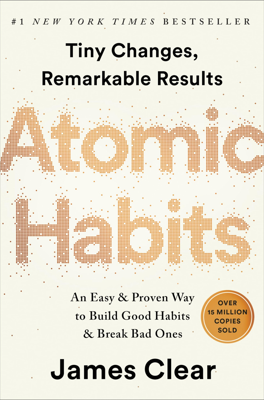The 3rd Law: Make It Easy
On the first day of class, Jerry Uelsmann, a professor at the University of Florida, divided his film photography students into two groups: a "quantity" group graded on the number of photos produced and a "quality" group graded on the excellence of a single photo. Surprisingly, the quantity group produced the best photos by the end of the term. They were busy taking photos, experimenting, learning from mistakes, and honing their skills, while the quality group mostly theorized about what would make a perfect photo.
This story illustrates the difference between being in motion and taking action. While motion involves planning and learning, action is the behavior that delivers a result. Motion can feel like progress and help avoid failure, but only action can lead to actual outcomes. If you want to master a habit, start with repetition, not perfection.
Habit formation occurs through repetition, leading to clearer physical changes in the brain. This process, known as long-term potentiation or Hebb’s Law ("Neurons that fire together wire together"), strengthens the neural connections associated with that habit over time. Examples include the enlarged cerebellum in musicians and the increased gray matter in mathematicians and London taxi drivers.
Repetition is crucial for habit formation, leading to the automaticity of behavior, where actions become more automatic with consistent practice. Habit formation is not about the time it takes but the number of repetitions. The more frequently a behavior is performed, the more automatic it becomes. This is why it’s essential to make your habits easy to start with to ensure consistent repetition.
The 3rd Law of Behavior Change states that making habits easy is critical. Most behaviors follow the Law of Least Effort—people gravitate toward the option that requires the least work. Reducing friction and making good habits convenient increases the likelihood of their occurrence. Environment design plays a substantial role in making habits easy; for instance, choosing a gym on your way to work minimizes friction.
To optimize your environment, remove points of friction and prime your spaces for intended actions. Techniques like Twyla Tharp’s ritual of taking a cab to the gym simplify decisions, making it easier to stick to habits. Decisive moments, small choices that impact the trajectory of your day, are also crucial. Mastering these can lead to significant behavior changes over time.
The Two-Minute Rule suggests that when starting a new habit, it should take less than two minutes to initiate. This strategy lowers the barrier to entry, making it easier to consistently start the habit. The goal is to standardize the habit by showing up and performing an action, no matter how small, to build consistency and identity reinforcement.
For long-term success, you can scale the habit up gradually from its simplest form. By focusing on just the initial two minutes, you ensure the habit becomes a regular part of your routine before optimizing and expanding it.
Victor Hugo’s method of locking away his clothes to prevent procrastination demonstrates creating commitment devices to make bad habits difficult and good habits easier. Commitment devices are present actions that control future behavior, making it more challenging to engage in bad habits and easier for good ones.
Automation and strategic onetime decisions can lock in good habits and eliminate bad ones. Examples include using technology for automatic savings plans, social media blockers, and automating tasks that are infrequent or tedious but necessary.
In summary, focus on reducing friction for good behaviors, making bad habits difficult, and using environment design and automation to support habit formation. By starting small, employing the Two-Minute Rule, and leveraging automation, you can build habits that become second nature and create a conducive environment for long-term success.
